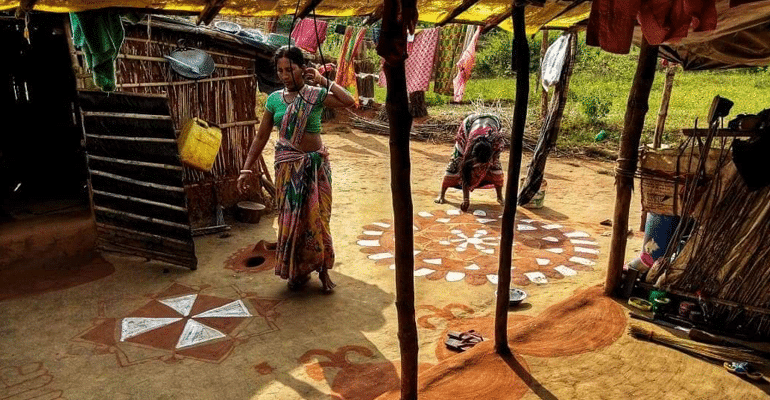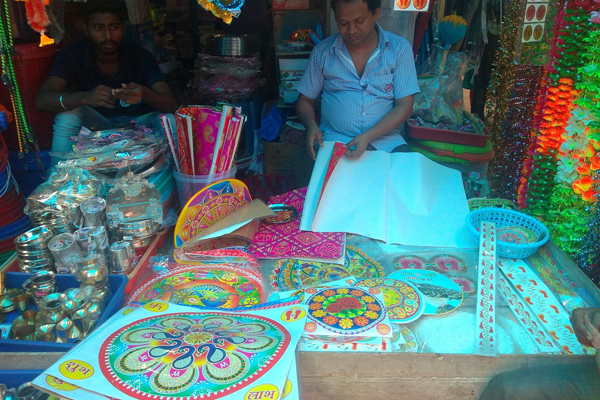Whatever time of the year it may be, India is always united by its festive season and the cultural heritage is an inseparable part of all pujas. Be it Durga Puja or Lakshmi Puja, attendance of pandal hoppers never drops but sadly, the traditional art forms are vanishing slowly.
According to the Hindu Calendar, every year, Lakshmi Puja is performed in the month of Ashvin and is known as Kojagara Puja.

Talking about the Bengalis, it is sad that due to modern tools of art, alpona (rangoli), which is one of the oldest traditional folk-art is slowly diminishing and is getting replaced by plastic stickers, color powders, and acrylic paints.
Traditional Alpona can still be seen in the rural belt of West Bengal on the huts with earthen floor and walls, which are wiped with cow-dung every day. In this art form, your fingers become the painting brush and the flour and rice paste becomes your paint.
Usually drawn by women, this unique art form has motifs that are symbolic and is associated with Goddesses. One has to draw the feet of Lakshmi to invite her to their home. The ritual and customs associated with it make it further auspicious and unique. What matters most is the emotions attached to it and therefore your alpona need not be perfect or grand and it can very well consist of simple patterns.

Buying little clay idols and organizing puja at home amid family members, close relatives have a different charm altogether. From drawing the best alpona in front of Goddess to getting to waiting in queue for ‘bhog’ is something every Bengali is familiar with.
It is known to be one of the auspicious ways to please the Goddess and people believe that the deity only enters in those people’s houses who practice cleanliness.
When there are so many beautiful memories which can be associated with our traditions, cultures and art forms, why on earth are we focussing on the technicalities and heading towards something that doesn’t have a personal touch or emotions associated with it?

